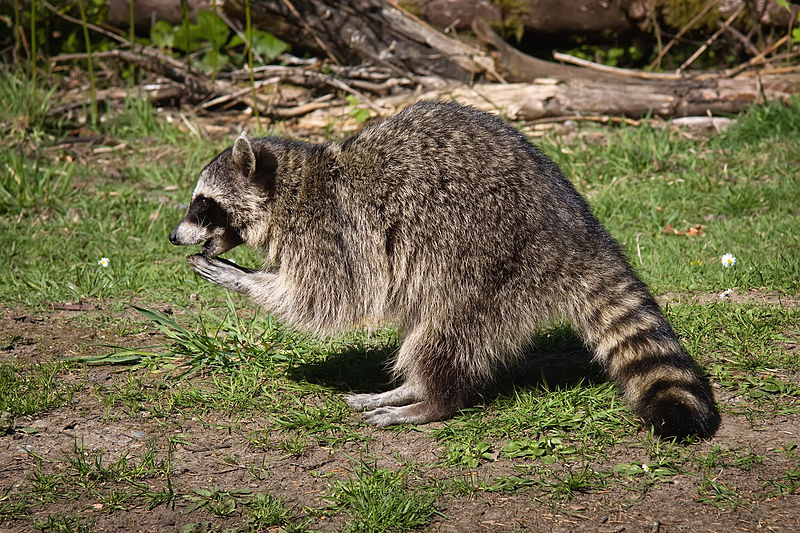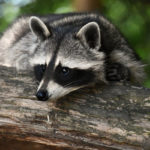Parvovirus can be deadly to raccoons, but with the right knowledge, you can help protect them.
Have you ever watched a raccoon rummaging through your trash or scurrying across your backyard and wondered about the little critter’s health? Well, today we’re diving into a serious but important topic: parvovirus in raccoons.
Now, before you roll your eyes and think, “Oh great, another virus to worry about,” hear me out. Parvovirus is no joke—it’s a highly contagious virus that can wreak havoc on our furry friends, whether they’re living wild and free or cuddled up in a cozy home.
Understanding parvovirus is crucial, not just for the well-being of raccoons but also for maintaining a healthy ecosystem. This sneaky virus doesn’t just stop at making raccoons sick; it can spread quickly and cause severe, often fatal, illnesses.
So, whether you’re a pet raccoon owner, a wildlife lover, or just someone who wants to be a responsible neighbor to nature, this guide will arm you with the knowledge you need to keep raccoons safe and sound.
Key Takeaways
- Parvovirus is a highly contagious viral disease affecting raccoons.
- Symptoms include lethargy, vomiting, and diarrhea.
- Prevention through vaccination and proper hygiene is crucial.
- Immediate veterinary care is essential for infected raccoons.
What is Parvovirus?
Alright, let’s dive right into it—what exactly is this parvovirus we keep talking about? Parvovirus is a tiny but mighty virus that primarily targets the gastrointestinal tracts of animals, causing severe illness. In raccoons, this virus is particularly nasty because it spreads like wildfire and can be deadly if not addressed promptly. Think of it as the unwelcome party crasher that just won’t leave and insists on making everyone sick.
Parvovirus is highly contagious, meaning it can spread rapidly through populations of raccoons, whether they’re in the wild or kept as pets. The virus spreads primarily through the fecal-oral route. Yup, you guessed it—raccoons come into contact with infected feces, either directly or through contaminated environments, and the virus gets to work.
What makes parvovirus such a formidable foe is its resilience. It can survive in the environment for extended periods, making it easy for unsuspecting raccoons to pick it up while they’re out and about, exploring their world. Once infected, a raccoon can start shedding the virus within a few days, even before showing any symptoms, turning them into little viral vectors that inadvertently put their fellow raccoons at risk.
But here’s the kicker—parvovirus doesn’t just settle for causing a minor tummy ache. It can lead to severe gastrointestinal distress, dehydration, and in severe cases, death. This is why understanding and recognizing parvovirus is so critical for anyone who cares about raccoons. The good news? With the right knowledge and preventive measures, we can help protect these curious critters from the wrath of parvovirus.
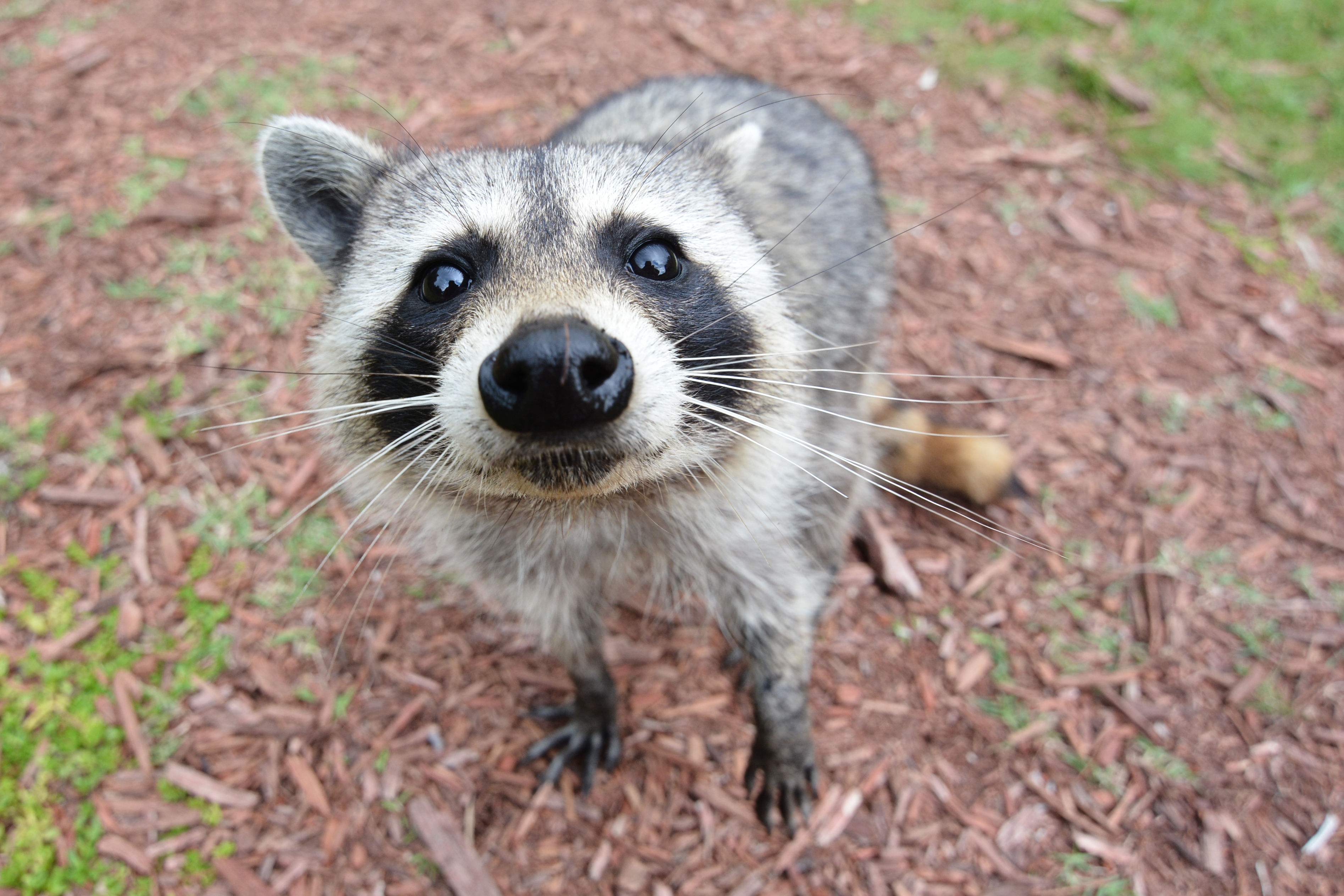
Symptoms of Parvovirus in Raccoons
So, how can you tell if a raccoon is dealing with parvovirus? Recognizing the symptoms early is key to getting our furry friends the help they need. Here are the telltale signs that a raccoon might be battling this pesky virus:
Lethargy
- If a raccoon is unusually sluggish or appears to lack energy, this could be a red flag. Raccoons are typically active and curious creatures, so any significant drop in activity levels is worth noting.
Vomiting
- One of the more obvious signs, frequent vomiting can indicate that something is seriously wrong. Keep an eye out for raccoons that seem to be retching or bringing up food and liquids more often than usual.
Diarrhea
- Persistent diarrhea is another major symptom. It can quickly lead to severe dehydration, which is especially dangerous for young or already weakened raccoons. Diarrhea may be bloody or have an unusual consistency, both of which are cause for concern.
Loss of Appetite
- If a raccoon suddenly loses interest in food, it’s time to take notice. Given their usual enthusiasm for scavenging and eating, a lack of appetite can signal that they’re feeling unwell.
Dehydration
- Alongside vomiting and diarrhea, dehydration is a serious risk. Signs include sunken eyes, dry nose and mouth, and a generally weak appearance. Dehydration can rapidly become life-threatening if not addressed.
Abdominal Pain
- Raccoons in pain might exhibit signs like whimpering, hunching over, or reluctance to move. If a raccoon seems to be guarding its stomach or acting unusually sensitive to touch, it could be experiencing abdominal pain due to parvovirus.
Depression
- Yes, animals can get depressed too! If a raccoon appears unusually despondent or disinterested in its surroundings, this behavioral change could be linked to the virus.
How Parvovirus Spreads
Now that we know what parvovirus is and the havoc it can wreak, let’s talk about how this sneaky virus spreads. Understanding the transmission pathways is crucial for preventing outbreaks and protecting our raccoon friends.
Fecal-Oral Route
- The primary mode of transmission for parvovirus is the fecal-oral route. In simple terms, this means that the virus is shed in the feces of infected raccoons and can be ingested by other raccoons through contaminated food, water, or surfaces. Gross, I know, but it’s the reality of how this virus spreads so effectively.
Contaminated Environments
- Parvovirus is a tough little bugger—it can survive in the environment for months, even in harsh conditions. This means that areas frequented by raccoons, such as parks, forests, and urban backyards, can become hotspots for the virus. Once a raccoon comes into contact with an infected area, it can easily pick up the virus.
Direct Contact
- While less common than the fecal-oral route, direct contact between raccoons can also spread parvovirus. This can happen through grooming, fighting, or simply being in close proximity to an infected individual.
Humans and Pets as Vectors
- Humans and pets can unintentionally act as vectors for the virus. For instance, if you or your pet come into contact with contaminated feces or environments, you can carry the virus on your shoes, clothing, or paws back to your home, where it can be picked up by pet raccoons or other animals.
Infected Mothers to Offspring
- Mother raccoons can pass the virus to their offspring during birth or through their milk. This is particularly concerning because young raccoons (kits) have weaker immune systems and are more vulnerable to severe illness.
Water Sources
- Natural water sources, such as streams, ponds, and puddles, can become contaminated with parvovirus if infected feces enter the water. Raccoons drinking or playing in these waters can then contract the virus.
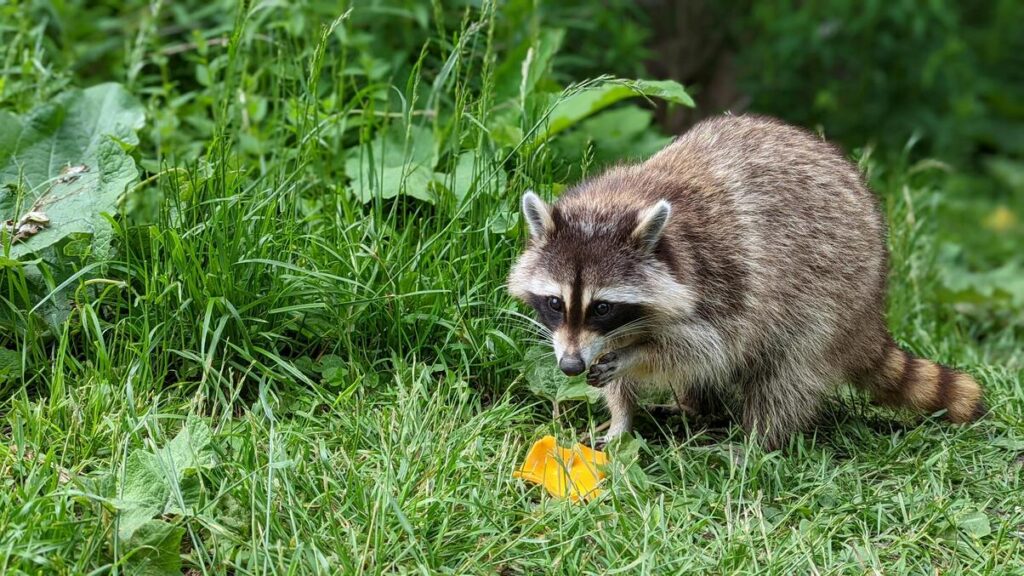
Preventing Parvovirus in Raccoons
Prevention is always better than cure, especially when dealing with a virus as nasty as parvovirus. Here’s how we can help keep our raccoon friends safe and sound from this troublesome intruder:
Vaccination
- The most effective way to prevent parvovirus in raccoons is through vaccination. If you have pet raccoons, talk to your veterinarian about getting them vaccinated. Vaccines help build immunity and significantly reduce the risk of infection.
Hygiene Practices
- Maintaining a clean environment is crucial. Regularly clean areas where raccoons roam, especially if you’ve spotted signs of illness. Dispose of any raccoon feces promptly and safely, using gloves and disinfectants to minimize the risk of spreading the virus.
Control Access to Food and Water
- Keep pet food and water dishes clean and out of reach of wild raccoons to prevent contamination. If you feed outdoor animals, ensure that feeding areas are cleaned regularly to prevent attracting infected raccoons.
Safe Disposal of Waste
- Properly dispose of garbage and secure trash cans to prevent raccoons from rummaging through them. Contaminated food or waste can be a source of parvovirus, so it’s essential to manage waste responsibly.
Minimize Contact with Unknown Raccoons
- If you have pet raccoons, try to minimize their contact with wild raccoons or other animals that might be carriers of the virus. Isolation from potential sources of infection can help keep them safe.
Regular Health Checks
- Regular veterinary check-ups for pet raccoons can catch any signs of illness early. Early detection and treatment are crucial for managing parvovirus and preventing outbreaks.
Educate and Advocate
- Spread the word about parvovirus and its impact on raccoons. Educating your community can help raise awareness and promote preventive measures. The more people know about the virus, the better equipped we all are to protect our wildlife.
Wildlife Management and Conservation Efforts
- Support and participate in local wildlife management and conservation programs. These efforts often include measures to monitor and control the spread of diseases like parvovirus, ensuring healthier ecosystems for all animals.
Treatment Options for Infected Raccoons
When a raccoon falls victim to parvovirus, quick and effective treatment is essential. While parvovirus is serious, timely intervention can make a world of difference. Here’s what to do if you suspect a raccoon is infected:
Immediate Steps to Take
Isolate the Raccoon
If you have a pet raccoon showing symptoms of parvovirus, isolate it from other animals immediately to prevent the virus from spreading.
Contact a Veterinarian
Get in touch with a veterinarian who has experience with wildlife or exotic pets. Explain the symptoms and follow their advice promptly.
Veterinary Care
Hospitalization
In severe cases, the raccoon may need to be hospitalized. This allows for intensive care and monitoring, increasing the chances of recovery.
Intravenous Fluids
Dehydration is a major concern with parvovirus. Vets often administer IV fluids to rehydrate the raccoon and restore electrolyte balance.
Medications
Antibiotics may be prescribed to prevent secondary bacterial infections, which can occur due to the weakened immune system and damaged intestines.
Anti-nausea and Anti-diarrheal Treatments
Medications to control vomiting and diarrhea can help stabilize the raccoon and make it more comfortable.
Supportive Care at Home
Hydration
Ensure the raccoon has constant access to fresh water. If they’re too weak to drink on their own, your vet may recommend subcutaneous fluids.
Nutritious Diet
A bland, easily digestible diet is often recommended during recovery. Consult your vet for specific dietary guidelines to support the raccoon’s healing process.
Warmth and Comfort
Keep the raccoon in a warm, quiet, and comfortable environment to reduce stress and aid recovery.
Monitoring and Follow-up
Regular Check-ups
Frequent veterinary check-ups are essential to monitor the raccoon’s progress. Adjustments to treatment plans might be necessary based on their recovery status.
Observe for Complications
Keep an eye out for any signs of complications, such as persistent vomiting, diarrhea, or lethargy. Immediate veterinary attention is required if the raccoon’s condition worsens.
Recovery and Long-term Care
Gradual Return to Normal Activities
As the raccoon recovers, gradually reintroduce normal activities. Ensure they have a safe and clean environment to explore.
Continued Hygiene
Maintain strict hygiene practices even after recovery to prevent any recurrence or spread of the virus.
Vaccination and Preventive Measures
If not already vaccinated, ensure the raccoon receives the parvovirus vaccine once it’s healthy enough. Continue with preventive measures to protect against future infections.
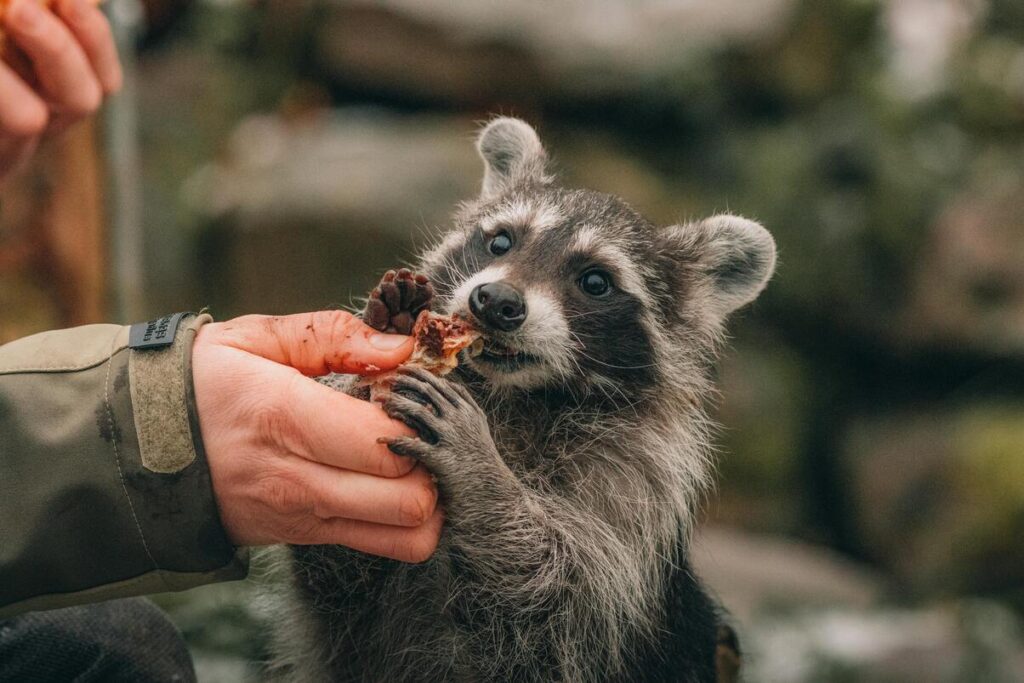
Impact on Wildlife and Ecosystems
Parvovirus doesn’t just affect individual raccoons—it has far-reaching consequences for wildlife populations and ecosystems as a whole. Understanding these impacts can help us appreciate the importance of managing and preventing this disease.
Wildlife Populations
Decline in Raccoon Numbers
Parvovirus outbreaks can lead to significant declines in raccoon populations. Since the virus is highly contagious and often fatal, it can quickly spread through a community of raccoons, leading to high mortality rates.
Vulnerability of Young Raccoons
Juvenile raccoons, or kits, are particularly vulnerable to parvovirus. Their underdeveloped immune systems make them less capable of fighting off the infection, leading to higher death rates among the young.
Impact on Reproductive Rates
High mortality rates, especially among younger raccoons, can lead to a decrease in reproductive rates. This affects the long-term sustainability of raccoon populations.
Ecosystem Balance
Predator-Prey Dynamics
Raccoons play a role in the food web as both predators and prey. A decline in raccoon numbers can disrupt these dynamics, affecting other species that rely on raccoons as a food source or those that raccoons prey upon.
Scavenging and Seed Dispersal
Raccoons are scavengers and help clean up the environment by consuming carrion and waste. They also aid in seed dispersal through their diet, contributing to plant propagation. A reduction in raccoon populations can lead to an imbalance in these ecological functions.
Disease Spread
Sick raccoons can act as reservoirs for other diseases, potentially spreading them to other wildlife species. The presence of parvovirus can exacerbate the spread of additional pathogens, further impacting wildlife health.
Conservation and Community Efforts
Monitoring and Research
Conservation efforts often include monitoring wildlife populations for signs of disease. Research into parvovirus and its effects helps develop strategies to mitigate its impact on raccoons and other wildlife.
Habitat Management
Effective habitat management can reduce the spread of parvovirus. Ensuring clean environments and reducing contact between wild and domestic animals are critical steps in preventing outbreaks.
Public Awareness
Educating the public about the risks and impacts of parvovirus is essential. Awareness campaigns can encourage responsible pet ownership, proper waste disposal, and support for wildlife conservation initiatives.
Broader Ecological Implications
Biodiversity Loss
The decline in raccoon populations can contribute to broader biodiversity loss. Each species plays a unique role in its ecosystem, and the loss of raccoons can have cascading effects on other wildlife and plant species.
Ecosystem Resilience
Healthy, diverse ecosystems are more resilient to changes and stresses. Maintaining raccoon populations helps preserve this resilience, ensuring ecosystems can adapt and thrive despite environmental challenges.
Conclusion
And there you have it—our deep dive into the world of parvovirus and its impact on raccoons. It’s clear that while this virus is a formidable foe, armed with the right knowledge and proactive measures, we can make a significant difference in protecting our raccoon friends.
Understanding parvovirus, from its transmission methods to its devastating effects on individual raccoons and broader ecosystems, empowers us to take action. Whether it’s through vaccination, maintaining clean environments, or spreading awareness, every small step counts in the fight against this virus.
Remember, raccoons are more than just adorable backyard bandits; they play a crucial role in our ecosystems. By ensuring their health and well-being, we’re contributing to the overall balance and resilience of our natural world. So, let’s stay vigilant, informed, and ready to act. Together, we can keep our raccoons safe and thriving, ensuring they continue to delight and intrigue us with their nocturnal escapades.







